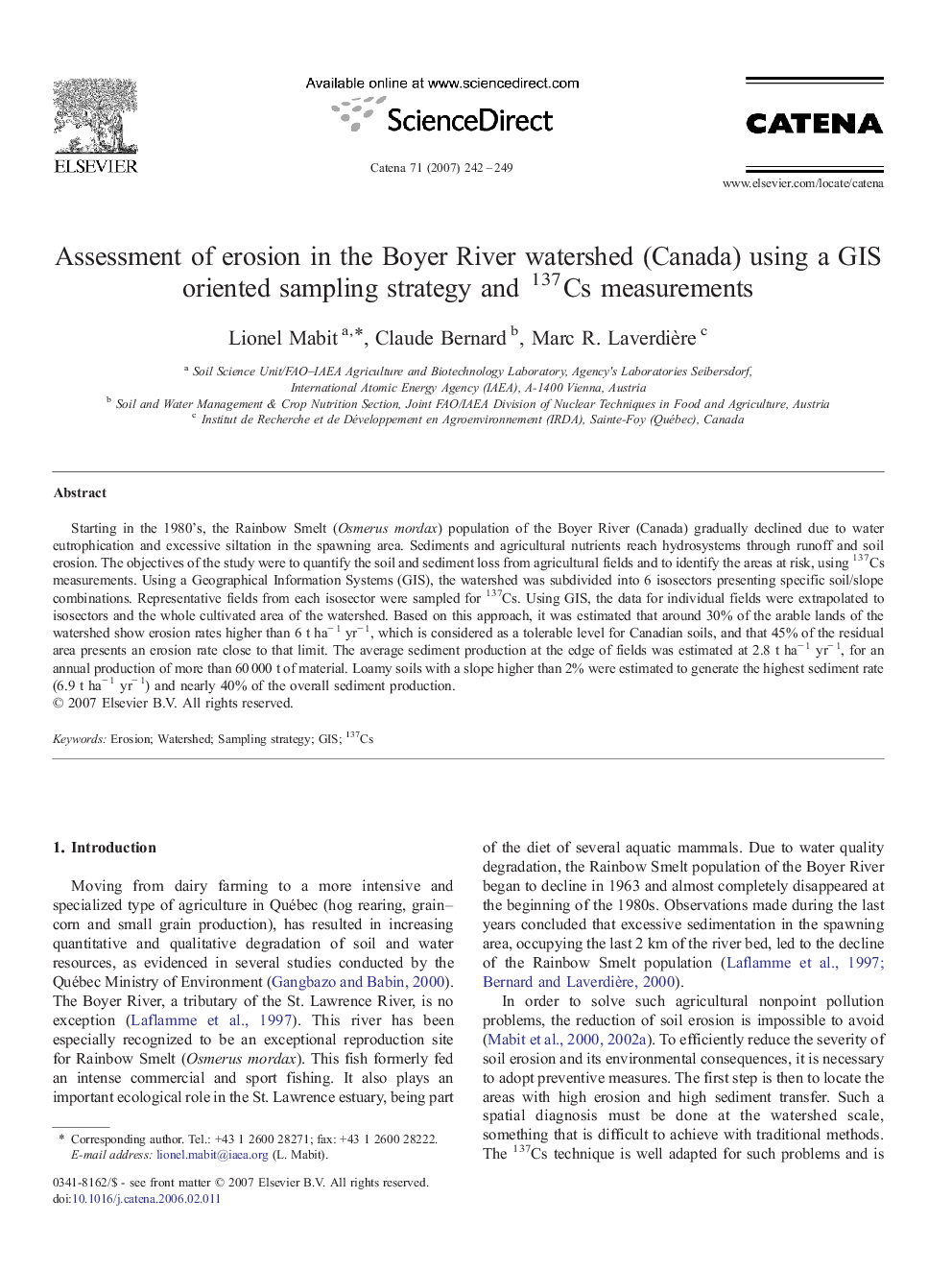| کد مقاله | کد نشریه | سال انتشار | مقاله انگلیسی | نسخه تمام متن |
|---|---|---|---|---|
| 4572549 | 1332184 | 2007 | 8 صفحه PDF | دانلود رایگان |

Starting in the 1980's, the Rainbow Smelt (Osmerus mordax) population of the Boyer River (Canada) gradually declined due to water eutrophication and excessive siltation in the spawning area. Sediments and agricultural nutrients reach hydrosystems through runoff and soil erosion. The objectives of the study were to quantify the soil and sediment loss from agricultural fields and to identify the areas at risk, using 137Cs measurements. Using a Geographical Information Systems (GIS), the watershed was subdivided into 6 isosectors presenting specific soil/slope combinations. Representative fields from each isosector were sampled for 137Cs. Using GIS, the data for individual fields were extrapolated to isosectors and the whole cultivated area of the watershed. Based on this approach, it was estimated that around 30% of the arable lands of the watershed show erosion rates higher than 6 t ha− 1 yr− 1, which is considered as a tolerable level for Canadian soils, and that 45% of the residual area presents an erosion rate close to that limit. The average sediment production at the edge of fields was estimated at 2.8 t ha− 1 yr− 1, for an annual production of more than 60 000 t of material. Loamy soils with a slope higher than 2% were estimated to generate the highest sediment rate (6.9 t ha− 1 yr− 1) and nearly 40% of the overall sediment production.
Journal: CATENA - Volume 71, Issue 2, 15 October 2007, Pages 242–249